Something went wrong!
Hang in there while we get back on track
Best attractions in Ancona

Majestically, the Basilica Cattedrale di San Ciriaco sits atop Colle Guasco overlooking Ancona, offering you an impressive view of the city and the bay. This church, elevated to cathedral status in the 11th century, combines Romanesque and Byzantine architectural elements and was built on the remains of an ancient temple dedicated to Aphrodite.
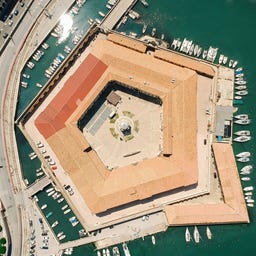
The Mole Vanvitelliana, also known as the Lazzaretto di Ancona, is a striking landmark set on an artificial island in Ancona’s harbor. Its distinctive pentagonal shape makes it truly eye-catching. Designed by architect Luigi Vanvitelli and built between 1733 and 1743, it originally served as a quarantine station to protect the city from epidemics. Over the centuries, it took on various roles, from military hospital to goods warehouse. Today, the Mole has been transformed into a lively cultural center, home to art exhibitions, events, and the fascinating Museo Tattile Omero.
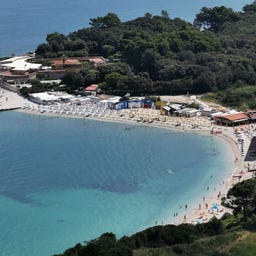
Spiaggia del Molo, nestled in the bay of Portonovo, is a beloved beach known for its crystal-clear waters and smooth white pebbles - an idyllic spot for families, couples, and friends alike. The adjoining beach club “Il Molo” offers everything you need for a comfortable day by the sea: Wi-Fi, warm showers, changing rooms, and sunbed and umbrella rentals. Culinary delights await at the on-site restaurant, serving regional specialties including the famous Moscioli - wild mussels native to Portonovo. Surrounded by the untouched nature of Monte Conero, this beach is perfect for those seeking both relaxation and indulgence.
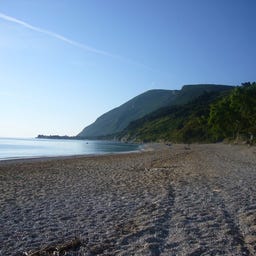
Spiaggia di Mezzavalle, just north of Portonovo, is a pristine, untouched dream beach nestled within the Conero Regional Park. Framed by white cliffs and lush greenery, this long pebble beach offers turquoise waters, tranquility, and a deeply relaxing atmosphere. The descent from the Conero provincial road is steep and challenging (sturdy footwear is a must!), but those who make the effort are rewarded with spectacular views and a truly wild landscape. As expected, facilities are minimal — though a simple bar/trattoria is available. A perfect escape for nature lovers and those seeking peace and quiet.
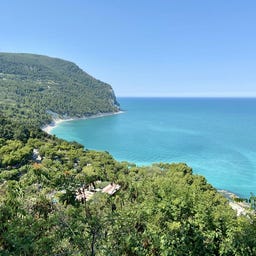
Rising as the highest cliff along the western Adriatic coast, Monte Conero boasts impressive 500-meter cliffs that emerge directly from the sea. The mountain, part of the Parco Regionale del Conero, offers you a dense network of 18 marked hiking trails, excellent climbing opportunities, and ranks among Italy's top 10 spots for birdwatching.
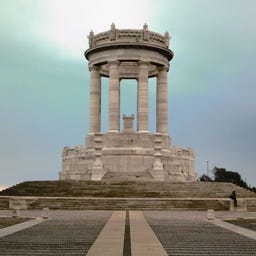
Majestically, the Monumento ai caduti overlooks the Adriatic coast of Ancona - an impressive war memorial from the 1920s that resembles a flying eagle when viewed from the sea. Designed by architect Guido Cirilli, the circular structure with its eight Doric columns made of Istrian stone was inaugurated in 1930 and commemorates the fallen of World War I.
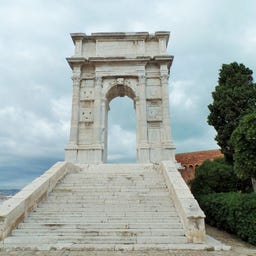
The Arco di Traiano rises at the port of Ancona as one of the best-preserved Roman triumphal arches from the 2nd century AD. Designed by Apollodoro di Damasco, this marble arch was erected by the Roman Senate in honor of Emperor Traiano, who significantly expanded the city's port.
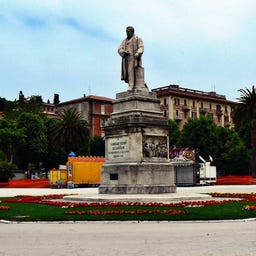
Piazza Cavour is one of the four main squares in the historic center of Ancona, covering an impressive area of 3 hectares. As a central hub, it connects the neighborhoods from the 19th and 20th centuries and is strategically located along the "da mare a mare" promenade, which runs from the harbor to the cliffs of Passetto.

Spiaggia del Passetto is Ancona’s city beach and a popular meeting spot for both locals and visitors. Nestled along the Adriatic coast, it captivates with its rugged cliffs and colorful boat houses carved directly into the rock. To get there, head to the Monumento ai Caduti. From this landmark, a grand staircase leads down to the sea, offering stunning panoramic views of the coastline along the way.

The Teatro delle Muse in Ancona is the largest theater in the Marche region and is considered one of the most important opera houses in Italy. The neoclassical building, designed by architect Pietro Ghinelli, was inaugurated in 1827 with works by Rossini, suffered severe damage during World War II, and remained closed for almost 60 years afterward.
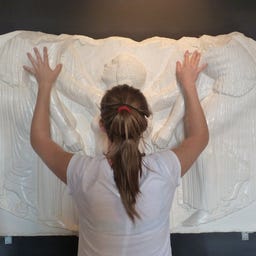
At the Museo Omero in Ancona, you can expect a unique art experience where you are allowed to actually touch sculptures and architectural models. Founded in 1993 by the visually impaired initiators Aldo Grassini and Daniela Bottegoni, the museum is now located in the impressive Mole Vanvitelliana, an 18th-century pentagonal building on an artificial island.
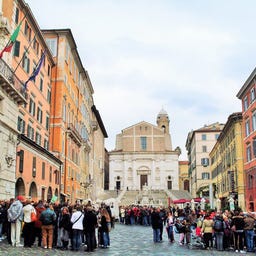
The Piazza del Plebiscito is the oldest of Ancona's four main squares and has been a multi-level, rectangular space with characteristic ramps and stairs since the 15th century. Here, you can find significant buildings like the Palazzo del Governo, the Church of San Domenico featuring paintings by Titian and Guercino, as well as the striking marble statue of Pope Clement XII. The square's tumultuous history is reflected in the Fontana dei Decapitati, which commemorates dramatic events from 1532. Today, this car-free square, named after the popular vote of 1860, serves as the social hub of the city.
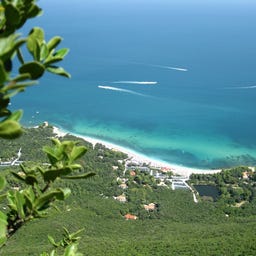
In the Parco regionale del Conero, a 6,011-hectare nature reserve on the Italian Adriatic coast, you can expect an impressive mix of steep cliffs, hidden coves, and Mediterranean vegetation.
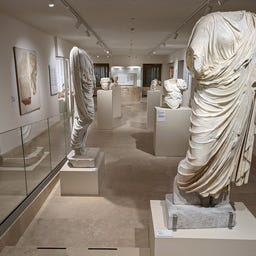
In the magnificent Palazzo Ferretti, a 16th-century noble palace, you will find one of Italy's most significant archaeological museums, featuring around 190,000 artifacts from the Marche region. Here, you can explore the largest collection of Picene artifacts dating from the 9th to the 4th century BC, while the historic rooms are adorned with frescoes by Pellegrino Tibaldi and the Zuccari brothers.
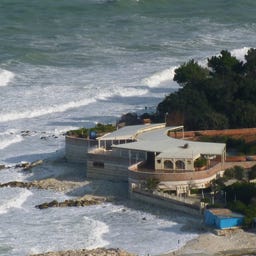

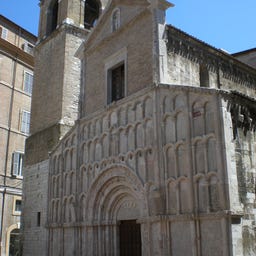
In the historic harbor area of Ancona, you will find the Chiesa di Santa Maria della Piazza, a fascinating example of Romanesque architecture from the 11th and 12th centuries. This three-nave basilica was built on the foundations of an early Christian church from the 4th century and impresses with its intricately designed façade featuring blind arches and Byzantine reliefs. Through the glass floor, you can admire the well-preserved early Christian mosaics from the 4th and 6th centuries, while colorful ceramic bowls in the church arches add an unusual splash of color. The reliefs created by Mastro Leonardo at the portal and the archaeological remains of the ancient city wall beneath make the church a striking testament to Ancona's rich history.
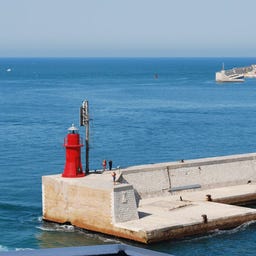
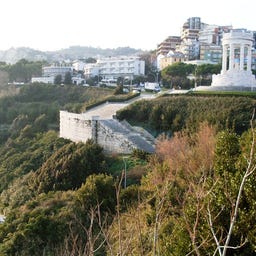
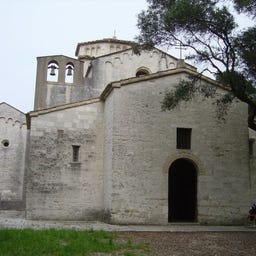
On the picturesque Adriatic coast of the Conero region, you will discover the Chiesa di Santa Maria di Portonovo, an architectural gem from the 11th century that has survived as the only remnant of a significant Benedictine monastery. Built from white Conero stone, the church combines Byzantine and Latin architectural styles and captivates with its geometric floor patterns made of yellow-ochre and red terracotta tiles. Even Dante Alighieri immortalized this place of worship in his "Divine Comedy" before it was repurposed as a warehouse during the Napoleonic era. Today, you can experience the restored church not only as a religious site but also admire the modern Byzantine Marian icon decoration by the Russian artist Gregorio Maltzeff above the altar.
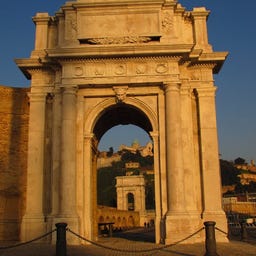
At the transition between the old and new harbor mole of Ancona stands the Arco Clementino, an impressive triumphal arch from the 18th century. This arch, created by Luigi Vanvitelli between 1735 and 1738, was built in honor of Ancona's designation as a free port by Pope Clement XII.
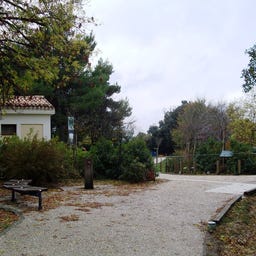
High above Ancona, the Parco della Cittadella sits on Colle Astagno, surrounded by impressive fortress walls from the 16th century. The expansive park, which was opened to the public in the 1970s after its military use, now offers you a spectacular panoramic view of the city and the harbor.
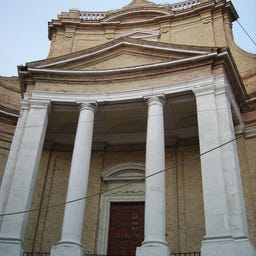
The Chiesa del Gesù in Ancona captivates with its unique concave façade, which harmoniously adapts to the arch of the harbor. Originally built in 1605, the church was significantly modernized by the renowned architect Luigi Vanvitelli between 1733 and 1743.
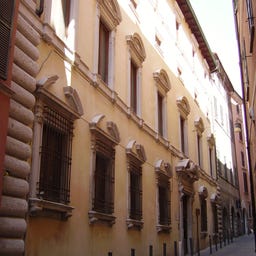
In the historic art gallery Pinacoteca civica Francesco Podesti located in the medieval Palazzo Bosdari, you will find an impressive collection of Italian paintings from the 14th to the 19th century. Founded in 1884 and dedicated to the painter Francesco Podesti, the gallery houses significant works by artists such as Carlo Crivelli, Tiziano, and Lorenzo Lotto.
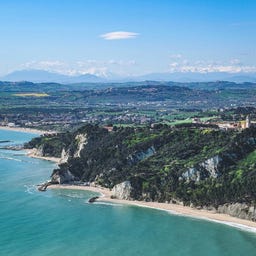
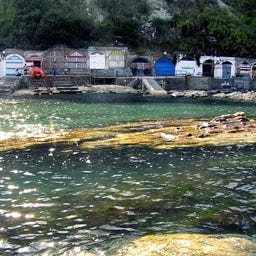
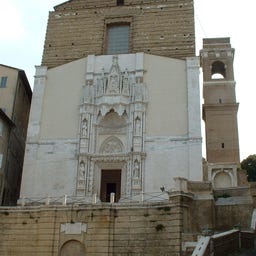
The Chiesa di San Francesco alle Scale impresses you with its remarkable blend of Gothic and late Baroque elements, particularly the Gothic portal by Giorgio Orsini da Sebenico from 1454, which stands out. Originally known as Santa Maria Maggiore, the church was founded by Franciscans in 1323 and received its characteristic monumental staircase in 1447, giving the church its nickname. Inside, you can look forward to an art historical highlight: the painting "Ascension" by Lorenzo Lotto from 1550. After a tumultuous history, during which the building served as a hospital for a time, the church has been an active place of worship again since 1953 in the Rione di San Pietro.
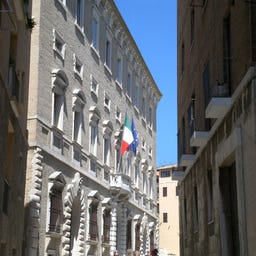
At the foot of Colle Guasco stands the Palazzo Ferretti, an impressive example of Renaissance and Baroque architecture that has served as the residence for the family of the same name since the 15th century. The current structure was built starting in 1540 based on designs by Antonio da Sangallo il Giovane and was later expanded by Luigi Vanvitelli with a magnificent wing. In the richly decorated halls, you will find intricate wooden ceilings and mythological frescoes by Federico Zuccari, while the grand staircase showcases Vanvitelli's architectural skill. Since 1958, the palace has housed the National Archaeological Museum of the Marche, one of the most significant archaeological collections in Italy.
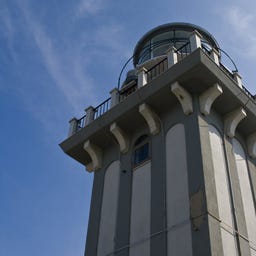
High above the port city stands the historic Faro di Ancona, a lighthouse from the 19th century that guided ships until 1965 and now, along with its modern counterpart, shapes the cityscape. From its position in the picturesque Parco del Cardeto, it offers you a spectacular panoramic view of the Gulf of Ancona, the bustling harbor, and the open sea. Here, Guglielmo Marconi conducted one of his groundbreaking experiments in 1904, receiving radio signals over a distance of 1750 km. Although the old lighthouse has been closed since 2005 due to safety issues, a walk to this historic site, regarded as the last public building of the papal administration in Ancona, is definitely worthwhile.
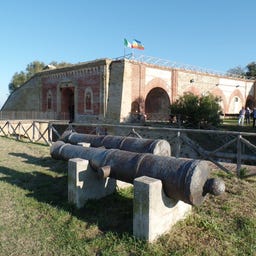
High above Ancona stands the Forte Altavilla, an impressive fortress from the time of Italian unification, designed by architect Giuseppe Morando. From here, you can enjoy a wide panoramic view of the Adriatic coast and the surrounding area while wandering through the deep fortress moat and the historic defensive structures.
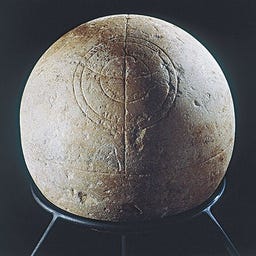
In the Italian town of Matelica, you can admire one of the rarest ancient timekeeping devices in the world: the Globo di Matelica, an intricately designed marble globe from the first two centuries AD, is, alongside the Globo di Prosymna in Greece, the only surviving example of its kind. This white marble globe, with a diameter of nearly 30 centimeters, served not only as a sundial but also for astronomical calculations and features Greek inscriptions of the twelve zodiac signs.
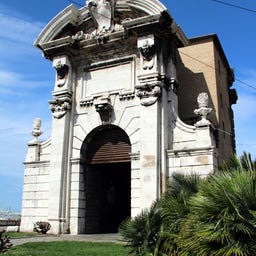
The impressive Porta Pia is one of the most significant city gates of Ancona - a baroque masterpiece made of Istrian stone and bricks, built between 1787 and 1789 under Pope Pius VI. The triumphal arch designed by Filippo Marchionni captivates with its maritime decorations featuring shells and sea monsters, reflecting Ancona's connection to the sea.
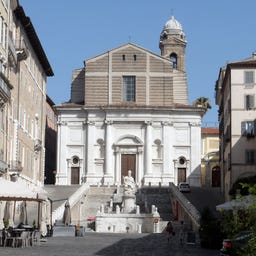
The Chiesa di San Domenico majestically overlooks a grand staircase at Piazza del Papa, the main square of Ancona. The current church building was constructed in 1771 based on designs by Carlo Marchionni, replacing an earlier structure from the 13th century. The impressive, albeit unfinished, facade made of Istrian stone is flanked by a distinctive bell tower with an octagonal drum. Inside the single-nave space, you will find significant artworks such as the "Crucifixion" by Titian and the "Annunciation" by Guercino, both of which have withstood the turbulent history of the church, from its use as a barracks to war damage.
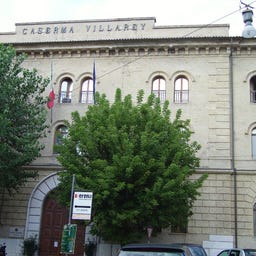
The impressive Caserma Villarey in Ancona captivates with its square shape, measuring 100 meters on each side, and the arcade-lined courtyard. Completed in 1867, this military building made of white Monte Conero stone and pink Furlo stone was once the site of significant historical events, including the Bersaglieri uprising of 1920 and brave rescue operations during the German occupation in World War II.
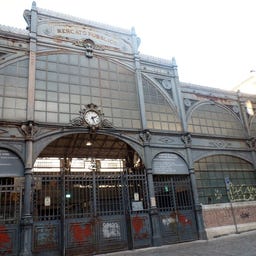
In the historic center of Ancona, you'll find the Mercato delle Erbe, a magnificent Art Nouveau market from 1926 that still serves as the city's main covered market. The two-story building, designed by Federico Federiconi, was interestingly constructed from the metal of Austro-Hungarian ships that Italy received as reparations after World War I.
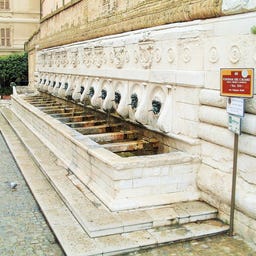
The Fontana del Calamo, also known as the "Fountain of the Thirteen Water Spouts," is one of the most striking Renaissance structures in Ancona. Built by Pellegrino Tibaldi between 1559 and 1560 in a Mannerist style, the fountain is located at a site where an ancient water source flowed even during Greek times.
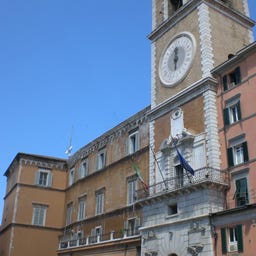
The Palazzo del Governo at Piazza del Plebiscito impressively combines Gothic and Renaissance elements and has a rich history dating back to the 14th century. After a devastating city fire in 1348, it was built as a new seat of government, and by the end of the 15th century, it took on its characteristic Renaissance form thanks to Francesco di Giorgio Martini. The distinctive clock tower, which has chimed a melody every day at noon since 1806, was constructed in 1581. Today, the building, which was partially destroyed during World War II, houses the prefecture of Ancona.

On a quiet hill in Tavernelle near Ancona, you will find one of the most significant military cemeteries in Italy from World War II. Established by the Commonwealth War Graves Commission, this cemetery is the final resting place for over a thousand fallen soldiers who lost their lives in 1944 in the area between Pescara and Pesaro. Here, mainly British soldiers are laid to rest, but there are also those from Canada, New Zealand, Australia, South Africa, and India. The well-maintained site features a visitor book and various memorial plaques, particularly dedicated to the Canadian and British forces.
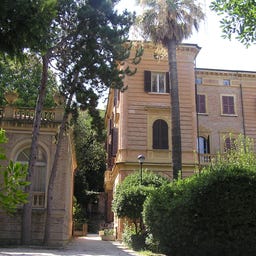
In the historic Villa Santa Margherita from the late 19th century, the past and present come together in a unique way. The magnificent garden combines Mediterranean romantic park and Italian garden style, while a colony of black squirrels has made its home among the monumental trees.
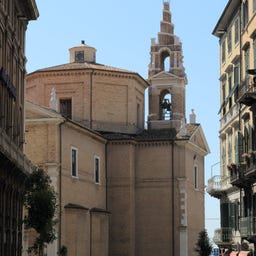
Right at the harbor of Ancona stands the Chiesa del Santissimo Sacramento, whose Renaissance façade dates back to the original construction in 1538. In the late 18th century, the church was redesigned in a Baroque style by Francesco Maria Ciaraffoni, who added its distinctive bell tower inspired by Sant'Ivo alla Sapienza in Rome.
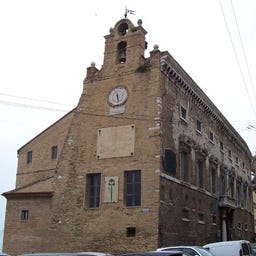
The Palazzo degli Anziani, which has served as the seat of the city government of Ancona since the 13th century, impressively overlooks the Piazza Benvenuto Stracca across from the Church of Gesù. Originally built in 425 AD by Galla Placidia, the structure was redesigned in the Gothic style by Margaritone d'Arezzo in 1270 after several destructions and now showcases a fascinating blend of Romanesque, Gothic, and Mannerist architecture.
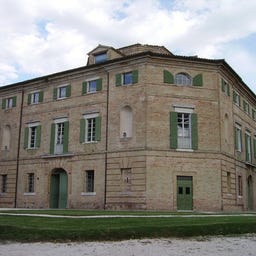
The magnificent Villa Favorita, dating back to the late 18th century, stands proudly with its hundred windows in the Baraccola area of Ancona, surrounded by a 16,000 square meter park. This villa, designed based on Palladian models, was the site where the historic peace treaty was signed in 1860, leading to Ancona's incorporation into the Kingdom of Italy.
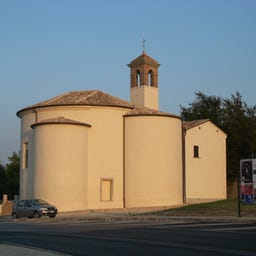
In the picturesque Posatora area of Ancona, you will find the Chiesa di Santa Maria Liberatrice vecchia, the smallest publicly accessible church in the city. This sacred building, constructed in the 16th century on the foundations of an older church from the 13th century, was built in gratitude for the end of a plague epidemic.
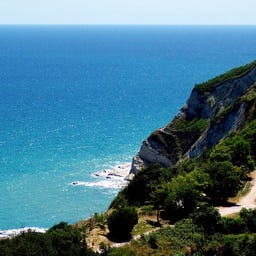
With 35 hectares, Parco del Cardeto is the largest city park in Ancona, offering you breathtaking views of the cliffs and the city. Here, you’ll find a fascinating collection of historical buildings, including a 19th-century papal lighthouse, the 16th-century fortress Bastione di San Paolo, and one of the best-preserved Jewish cemeteries in Europe, featuring gravestones from the 15th to 19th centuries.
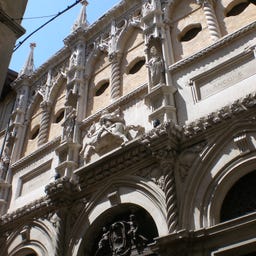
The magnificent Loggia dei Mercanti at the port of Ancona still reflects the city's economic boom in the 15th century when it was built as a meeting place for merchants. The Venetian-Gothic structure, designed by architect Giorgio da Sebenico, captivates with its three-part façade featuring four columns topped with statues of the cardinal virtues. After suffering severe damage during World War II, the building was meticulously restored and now serves as a conference room for the chamber of commerce. Inside, you can admire the impressive ceiling frescoes by Pellegrino Tibaldi, who renovated the building after a fire in the 16th century.
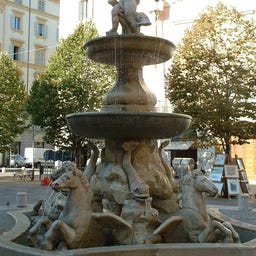
In the heart of Ancona, you'll find the impressive Fontana dei Cavalli, a Baroque masterpiece from the 18th century designed by Scipione Daretti and adorned with sculptures by Gioacchino Varlè. This three-tiered marble fountain is topped by a putto with a fish, while the lower basin features four seahorses and dolphins representing the various faces of the sea.
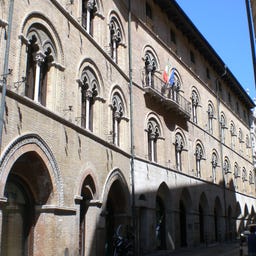
The Palazzo Benincasa, built in the 15th century for the wealthy shipowner Dionisio Benincasa, is the largest private city palace in the historic center of Ancona. Designed by architect Giorgio Orsini da Sebenico, the building impresses with its Gothic style, featuring pointed arch porticos and elegant biforium windows. Inside, you can admire remarkable ceiling frescoes by the Lombard painter Giuseppe Pallavicini, showcasing rare views of Ancona.
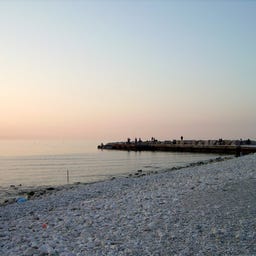
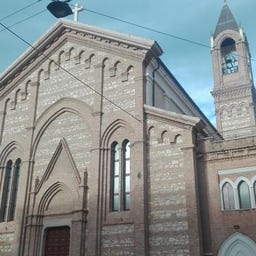
The Chiesa del Sacro Cuore in Ancona, Italy, is a Catholic church built around 1920 by architect Lorenzo Basso in the neo-Gothic style. This three-nave basilica was thoughtfully constructed for the city's expansion beyond the medieval walls and survived both World War II and the severe earthquake of 1972 unscathed.
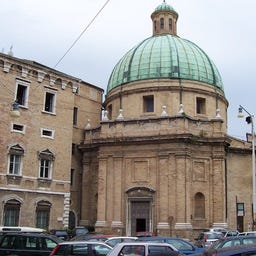
With its distinctive copper dome, the Chiesa dei Santi Pellegrino e Teresa has shaped the cityscape in the historic center of Ancona since the 18th century. Designed by Giovanni Battista Bartoli for the Carmelite order, the church impresses with its octagonal layout and warm terracotta façade.
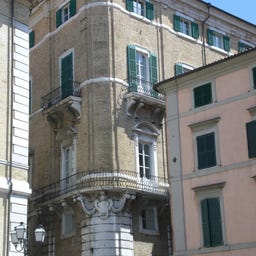
"Palazzo Jona-Millo," or "Bourbon Del Monte," is a late Baroque noble palace in Ancona.
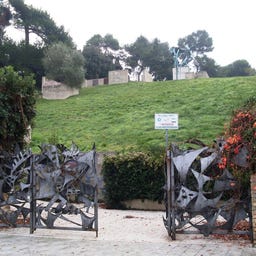
The "Pincio" of Ancona is a small public park, but of great historical importance, as it is the oldest in the city. Official website of the Municipality of Ancona, page [https://www.comune.ancona.gov.it/ankonline/cultura/parco-del-pincio/ Parco Del Pincio], having been established after the capture of Rome in 1870. It is sometimes popularly referred to as "Pincetto." The name recalls the famous Roman Pincio, where Mazzini, during the period of the Roman Republic, decided to place the statues of the most famous Italians, symbolizing Rome's role as the capital. Since 1870, public parks named after the Roman Pincio have also been established in other Italian cities, celebrating the reunification of Rome with Italy.
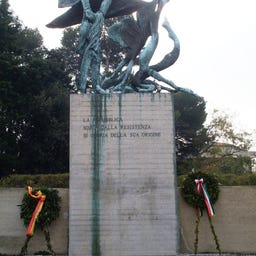
miniature miniature miniature The "Monument to the Resistance" in Ancona is located within the Pincio Park. The sculpture is made of bronze, created by Pericle Fazzini, and features the phrase "The Republic born from the Resistance takes pride in its origin." It was inaugurated on October 17, 1965. The monument depicts a man hanging by his arms from a branch of a stylized tree resembling a human figure, with a bird perched on the opposite branch.
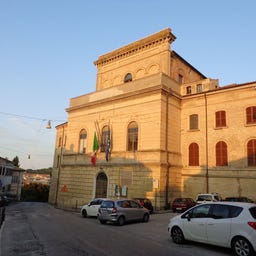
The former "Church of San Francesco ad Alto" is located in Ancona.
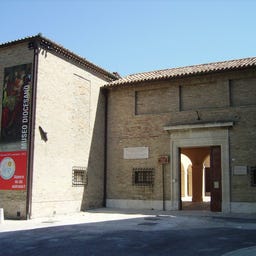
In the old bishop's palace next to the Duomo di Ancona, you discover an impressive collection of Christian art and artifacts that spans 20 centuries of church history. Founded in 1834, the museum houses precious treasures such as Byzantine icons, medieval sarcophagi, and four magnificent tapestries inspired by Rubens from the 17th century.
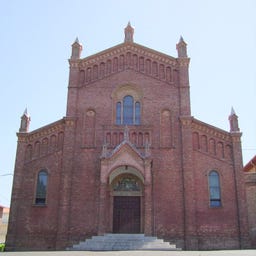
The "Church of San Francesco d'Assisi," commonly known as "of the Capuchins," is a neo-Gothic church in Ancona.
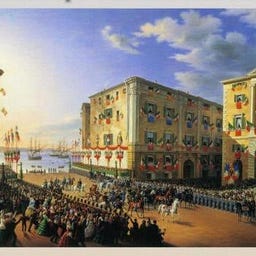
At the Piazza della Repubblica, one of Ancona's four main squares, you can expect a fascinating mix of history and culture with a view of the harbor. Here, you'll find the Chiesa del Santissimo Sacramento from the 16th century, which impresses with its distinctive octagonal dome from the 18th century. The centerpiece of the square is the Teatro delle Muse, which opened in 1827 and has been serving as the city's cultural center again since 2002 after being closed due to the war. With its horseshoe-shaped auditorium and four boxes, the theater is considered an acoustic masterpiece.
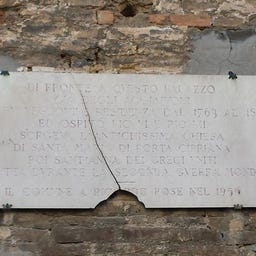
The "Church of Sant'Anna," originally dedicated to "Santa Maria in Porta Cipriana," is a disappeared Orthodox church in Ancona that was destroyed in April 1944 due to an air raid during World War II. It was built in the 13th century, on the foundations of the ancient Greek walls of Ancona, shortly before the expansion of the new city walls in 1221.
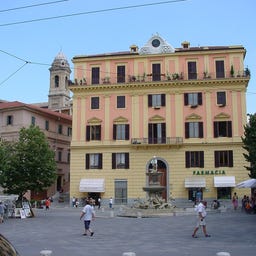
Piazza Roma is one of the four central squares in Ancona and was created after the demolition of the 16th-century city walls when the city became part of the Kingdom of Italy. Here, the historic neighborhoods of San Pietro, Capodimonte, Cardeto, and Santo Stefano meet at the intersection of the important main streets Corso Garibaldi, Corso Mazzini, and Corso Stamira. The square is lined with notable buildings like the Palazzo dell'Orologio and the Palazzo del Rettorato, and since 1908, it has been home to the magnificent Fontana dei Cavalli (Horse Fountain).
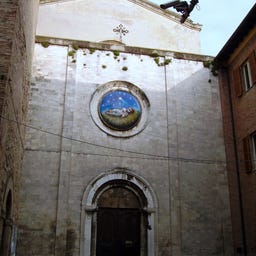
In the picturesque Capodimonte area of Ancona, you will find the Chiesa di San Giovanni Battista, a parish church with a Romanesque stone facade and a medieval bell tower. Originally dedicated to Saint Claudio, it received its current name in the 16th century and was remodeled in Baroque style by architect Lorenzo Daretti between 1779 and 1782.
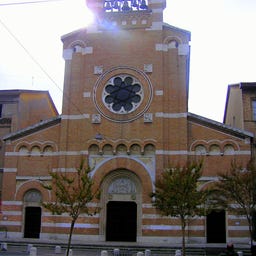
The "Church of the Holy Family" is a Catholic place of worship in Ancona; it is located on Corso Carlo Alberto, in the Piano San Lazzaro district.
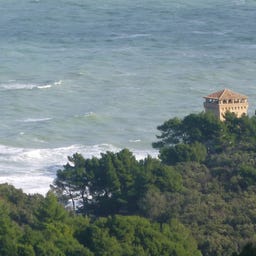
Torre di, 60020 Portonovo AN, Italien
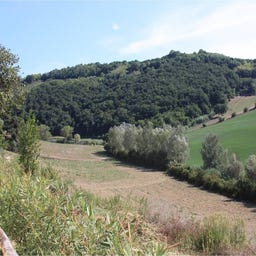
In the hilly coastal region of the Marche, you will find the Orto botanico Selva di Gallignano, one of the last original forest areas in the region, which has served as a botanical garden for the Polytechnic University of Ancona since 2000.
The "Convent of Santa Palazia," later "Prison of Santa Palazia," was a complex of buildings in Ancona, located on the hill of the Capuchins.
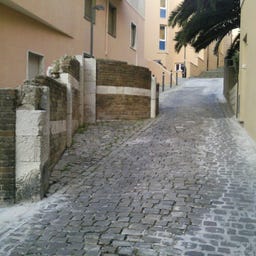
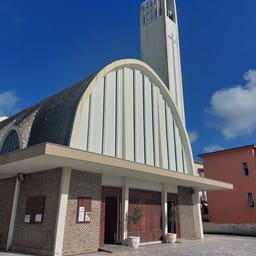
The "Church of Santa Maria delle Grazie" is a church in Ancona, located in the Grazie district.
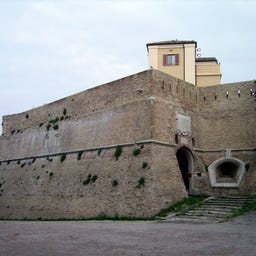
High above the port city stands the Cittadella di Ancona, an impressive fortress from the 16th century designed by Antonio da Sangallo the Younger. With its distinctive pentagonal shape and massive bastions, it is one of the most significant Renaissance fortifications in Italy and was used for military purposes until 1972.
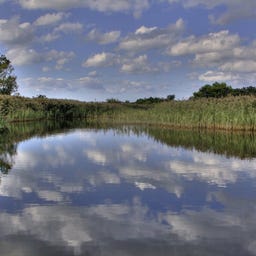
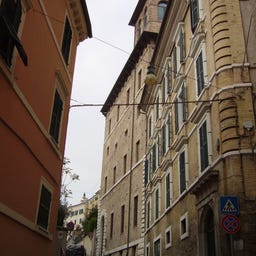
In the historic center of Ancona, you will find the Palazzo Camerata, an impressive noble palace from the 16th century that still captivates with its magnificent portal and white stone cornerstones. Built by the Camerata family, originally from Bergamo, the palace underwent extensive renovations in the 18th century, although the facade remains unfinished.
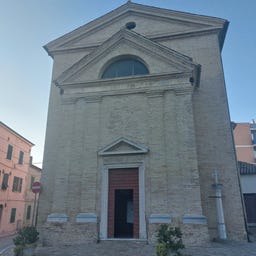
The "Church of Santa Croce" is a Catholic place of worship located in the Pietralacroce district of Ancona.
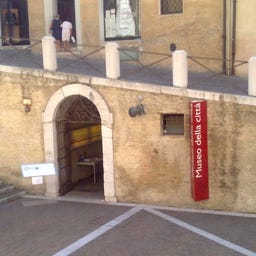
The "Museum of the City" is located in Ancona, in Piazza del Plebiscito, in premises that once belonged to the medieval hospital of San Tommaso di Canterbury and to a 19th-century fish market.
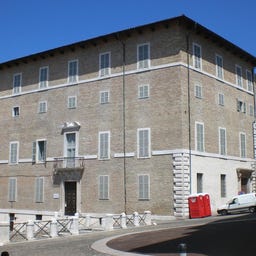
The "Mengoni-Ferretti Palace" is a noble palace in Ancona. It is located on the northeast side of Piazza del Papa, at the corner with the 13th-century San Pietro gate.
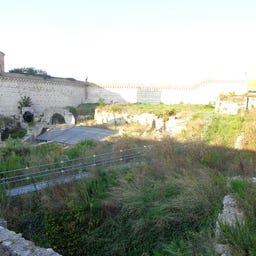
Between the hills of Guasco and Cappuccini stands the second most important Roman structure in Ancona after the Arch of Trajan: an impressive amphitheater from the late 1st century BC.
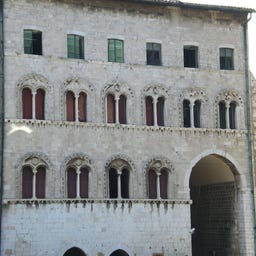
The Palazzo del Senato, built in the early 13th century, stands over the remnants of the ancient Roman Forum, with its foundations and column remains still visible next to the building today. The Romanesque façade designed by Mastro Filippo, made of white stone, impresses with its elegant columns, round arches, and distinctive double windows.
